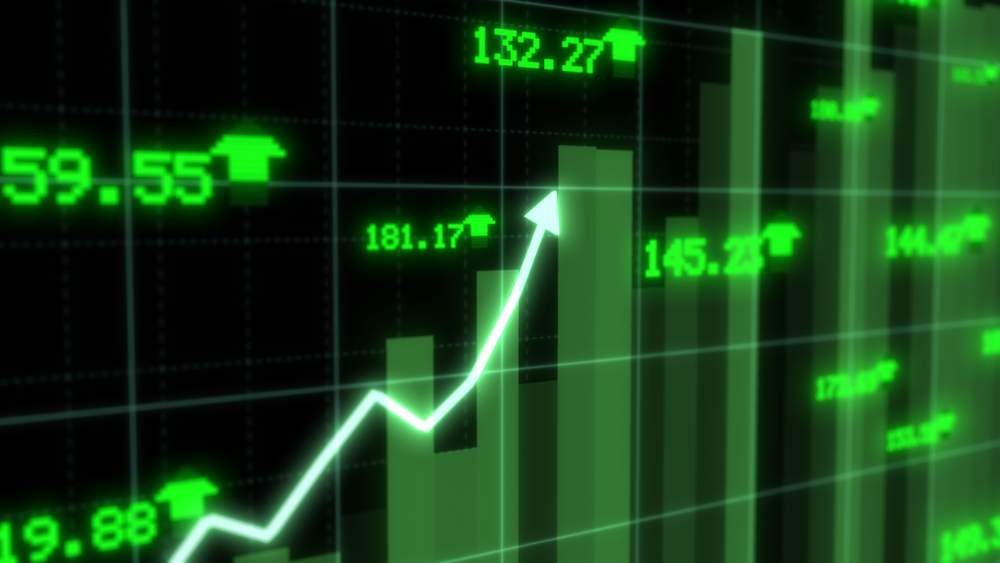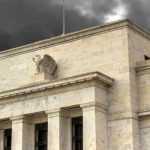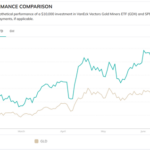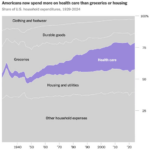
July 11, 2025 • Addison Wiggin
As we knock off for the week approaching mid-summer, it strikes us how hard it is to distinguish signal from noise. Markets defying gravity gives us pause.
Don’t buy in at elevated prices.
Keep your asset allocation in full view.
Buy cheap.
Sell dear.
It’s a funny old world, isn’t it?
AI is buying engineers like they’re first-round picks. The military is investing in rare earths like it’s the 1950s space race. Tariffs are flying, cocoa’s getting scarce, and your cereal may soon come with a luxury markup.
None of it, likely, concerns your portfolio.

July 10, 2025 • Addison Wiggin

July 9, 2025 • Addison Wiggin

July 11, 2025 • Addison Wiggin
We know many consumers continue to live paycheck to paycheck. After spiking higher, the drawdown in savings—cash that can be used in an emergency—is back to pre-pandemic levels.
While the overall debt picture is ugly, in some ways it isn’t – and that it may take some more time for a debt crisis to reach a kitchen countertop near you.
July 10, 2025 • Addison Wiggin
This new wave of tokenized shares is exciting. It has the potential to break down walls and democratize access to pre-IPO giants.
But at the moment, it’s also risky, opaque, and largely unregulated.
So while we applaud the innovation, we urge caution — especially if you’re being offered something that seems too good to be true.
July 9, 2025 • Addison Wiggin
Even if you’re starting with just $100, you now have more ways than ever to access private markets.
Yes, risks are higher.
Yes, due diligence is incredibly important.
But for investors willing to look beyond the traditional 60/40 portfolio, the rewards can be well worth it.
July 8, 2025 • Addison Wiggin
For close to one hundred years, the U.S. government made it illegal for ordinary investors to invest in pre-IPO startups — in other words, companies that weren’t public.
Unless you were a wealthy accredited investor (net worth of at least $1 million, or annual salary of $200,000), you could only invest in publicly-traded stocks and bonds.
This forced ordinary investors to miss out on big gains. According to Cambridge Associates, a financial advisor with clients including the Rockefeller Family and the Bill Gates Foundation, private startups have delivered annual returns of 55% over the last twenty-five years.
That’s five, six, seven times higher than the average returns of stocks. And it’s enough to double your money every two years or so.
July 8, 2025 • Addison Wiggin
A Bloomberg survey shows 30% of everyday Americans expect the labor market to get worse. Each jump of this magnitude in the past has preceded a recession.
Labor market data is screaming that there’s trouble in the real economy.
Except, of course, the data from the Bureau of Labor Statistics – the same government agency that has “revised” away over a million jobs reported as having been created during the Biden administration.
July 8, 2025 • Addison Wiggin
The second half of 2025 opens with fireworks and fog. The markets are still chasing dreams, even as the ground shifts beneath them. Tariffs are more than a tax — they’re a weaponized expression of a new economic order.
Profitless stocks are a signal of excess liquidity, not optimism. And every new announcement from the White House or Truth Social carries ripple effects that touch everything from currencies to commodities to your portfolio.
As an investor, your job isn’t to outguess the next tweet or tariff — it’s to understand what the world’s actually rewarding now, and what it’s quietly punishing.
In that light, cash flows still matter. Real assets still matter. Confidence, liquidity, and political clarity… matter more than ever.
July 7, 2025 • Joel Bowman
Universal healthcare and “free” (taxpayer-funded) education and the rest of the redistributive voter bribes are ways of spending money, not generating it. Progressive taxation is a means of redistributing wealth, not producing it. The difference is non-trivial.
Countries like Kuwait and Norway are not rich because of their respective governments’ addiction to expensive giveaway programs, whatever one thinks of the merits or alleged compassion of such redistributive policies. They are wealthy despite them.
Down at the other End of the World, meanwhile, president Javier Milei has been busy liberating Argentina’s long-suffering citizens from three-quarters of a century of politicians’ worst laid plans. We’ll have more about the goings on in our adopted home later in the week.

July 7, 2025 • Addison Wiggin
While market volatility may be the big story this year, the bigger story may be that of the U.S. dollar itself.
Year-to-date, it’s down over 10%.
That’s a huge move for any currency.
But usually the 10% moves occur in third-world countries experiencing a crisis, not the so-called world reserve currency.

July 7, 2025 • Addison Wiggin
From tax-law turnarounds to tariff theater, corporate spats, and labor dysfunction — all under the gaze of election season — this is a high-stakes narrative in real time. Trump, acting as hero and provocateur, has unleashed a ready-made script for midterm dominance — one that deeply impacts your investment blueprint.
If you’re going to win in this second half, you’ll need to align your portfolio with Trump’s moves, anticipate his counter-narratives, and hedge against the downside with tools like gold, and, yes, bitcoin.
But we’ll want to keep checking in with the plotline. Because in 2025, being on stage is the way to shape your results, not sitting in the audience.

July 3, 2025 • Addison Wiggin
The genius of the American experiment is that it allows for course correction — but only if we remember our role. Not as subjects, but as stewards.
Your role, good sir or wise gentle lady, is to continue doing what you’ve always done: managing your affairs with clear eyes and a steady hand, educating those who’ll carry the torch, and resisting the ever-present temptation to comply just for comfort’s sake.
Yes, the government will grow. Yes, the financial world may turn inside out before breakfast — possibly before your second cup of coffee. But you still have the right to think. To choose. To invest in your own way.

July 3, 2025 • Addison Wiggin
For now, the mixed economic data means stocks will likely trend higher, until there’s a crisis. And when there is a crisis, the Fed will finally make its move and aggressively cut rates.
And, for now, bond yields are still near their highest level in 15 years. Bond yields, even on U.S. Treasury bonds, are over the rate of inflation.
In short, it’s not a bad time to lock in bond yields now – which will go lower during a crisis, pushing bond prices higher. And in a crisis, today’s high-flying stocks, driven by retail investors with a fear of missing out – could easily get crushed.
From the creators of The Daily Reckoning, I.O.U.S.A, Empire of Debt and The Daily Missive





























